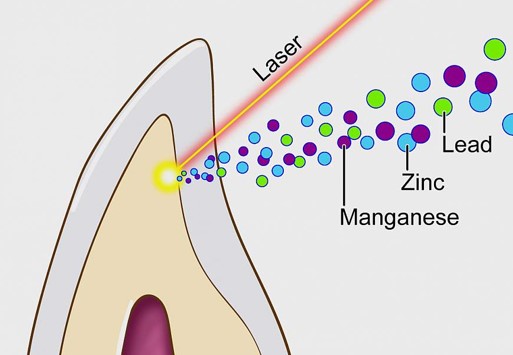 Parler
Parler Gab
Gab
Analgesic (Pain-Killing)
Antibacterial
Anti-diabetic
Anti-fungal
Anti-hypertensive
Anti-viral
Anti-parasitic
Anti-Leishmanial
Anti-inflammatory
Antioxidant
Antifungal
Anti-malarial
Anti-triochomonal
Anti-tumor activities
Bone supportive
Cardioprotective
Depressant & Anticonvulsive
Kidney Protective
Liver protective
The table below reveals in detail what parts of the coconut palm are responsible for producing these aforementioned biological effects.
.png)

Click to view the fully enlarged versions of the table here.
In support of these findings, the GreenMedInfo.com database presently contains research on the coconut palm's potential therapeutic value in preventing and/or treating over 50 different conditions, and expressing 16 different beneficial biological effects. You can view the supporting studies on our coconut research page.

The new study, titled "Cocos nucifera (L.) (Arecaceae): A phytochemical and pharmacological review," also reviewed the toxicity literature on the coconut palm's various constituents and found there was no evidence of acute toxicity, and only low toxicity associated with chronic exposure.
The study summarized the story of the coconut palm's fascinating spread around the world as follows:
The plant is originally from Southeast Asia (Malaysia, Indonesia, and the Philippines) and the islands between the Indian and Pacific Oceans. From that region, the fruit of the coconut palm is believed to have been brought to India and then to East Africa. After the discovery of the Cape of Good Hope, this plant was introduced into West Africa and, from there, dispersed to the American continent and to other tropical regions of the globe."
The review also summarized the traditional healing applications of the coconut palm. This is an important, complementary data set, because though many of the traditional uses have not yet been tested and validated by science, they may actually work exceptionally well for these conditions in actual practice. Below is a table showing many of these traditional uses:
The traditional uses were also summarized in the following paragraph:
In Brazil, extract from the husk fiber of C. nucifera is used to treat diarrhea (7). In Papua New Guinea, the leaves and roots of young plants are chewed as treatment for diarrhea and stomachaches (8,9). In Fiji, coconut oil is used to prevent hair loss and coconut water is used to treat renal disease (10). In Ghana, people use coconut milk to treat diarrhea (11). In Guatemala, the husk fiber extract is used as an antipyretic, to reduce renal inflammation, and as a topic ointment for dermatitis, abscesses, and injuries (12). In Haiti, a decoction of the dry pericarp is used for oral treatment of amenorrhea, and the oil is applied as an ointment to burns (13); an aqueous extract from the husk fiber is also used for oral asthma treatment (14). In India, infusions made with the coconut inflorescence are used for the oral treatment of menstrual cycle disorders (15). In Indonesia, the oil is used as a wound ointment, the coconut milk is used as an oral contraceptive, and fever and diarrhea are treated with the root extract (16–18). In Jamaica, the husk fiber extract is used to treat diabetes (19,20). In Mozambique, the fruit is consumed by men as an aphrodisiac (21). Peruvians use the aqueous extract of the fresh coconut fiber orally for asthma, as a diuretic, and for gonorrhea (22). In Trinidad, bark extract is used orally for amenorrhea and dysmenorrhea, and bark tea is used to treat venereal diseases (23). In Mexico, coconut is used to treat various disorders associated with urogenital tract infection by Trichomonas vaginalis (24). A decoction of the white flesh of the fruit is used in rural Malaysia to treat fever and malaria (25). In Kenya, the fruit is used to relieve skin rash caused by HIV infection (26).
The study concluded,
Cocos nucifera is a widely dispersed plant that has important pharmacological effects with low toxicity. Furthermore, medicinal use of C. nucifera has an environmental appeal, since this plant is widely used in the food industry and use of discarded plant parts will reduce waste and pollution. The pharmacological effects of the plant differ according to the part of the plant or fruit used. Antioxidant activity predominated in the constituents of the endocarp and coconut water. In addition, the fiber showed antibacterial, antiparasitic, and anti-inflammatory activities. Only the ethanolic extract of the root had depressant and anticonvulsant action on the central nervous system. Coconut water seems to have protective effects, e.g., on the kidney and heart, and antioxidant activity, as well as a hypoglycemic effect.
Read more at: GreenMedInfo.com
As Los Angeles wildfires burn, social media points to Israeli-made fires in Gaza
By News Editors // Share
Eat this crunchy veggie to fight metabolic syndrome
By News Editors // Share
Winning a battle in the war on censorship: Facebook scraps “fact-checkers”
By News Editors // Share
Terror attacks kick off in 2025 – It’s only going to get worse so be prepared
By News Editors // Share
This natural salve heals wounds better than petroleum jelly
By News Editors // Share
Governments continue to obscure COVID-19 vaccine data amid rising concerns over excess deaths
By patricklewis // Share
Tech giant Microsoft backs EXTINCTION with its support of carbon capture programs
By ramontomeydw // Share
Germany to resume arms exports to Israel despite repeated ceasefire violations
By isabelle // Share










